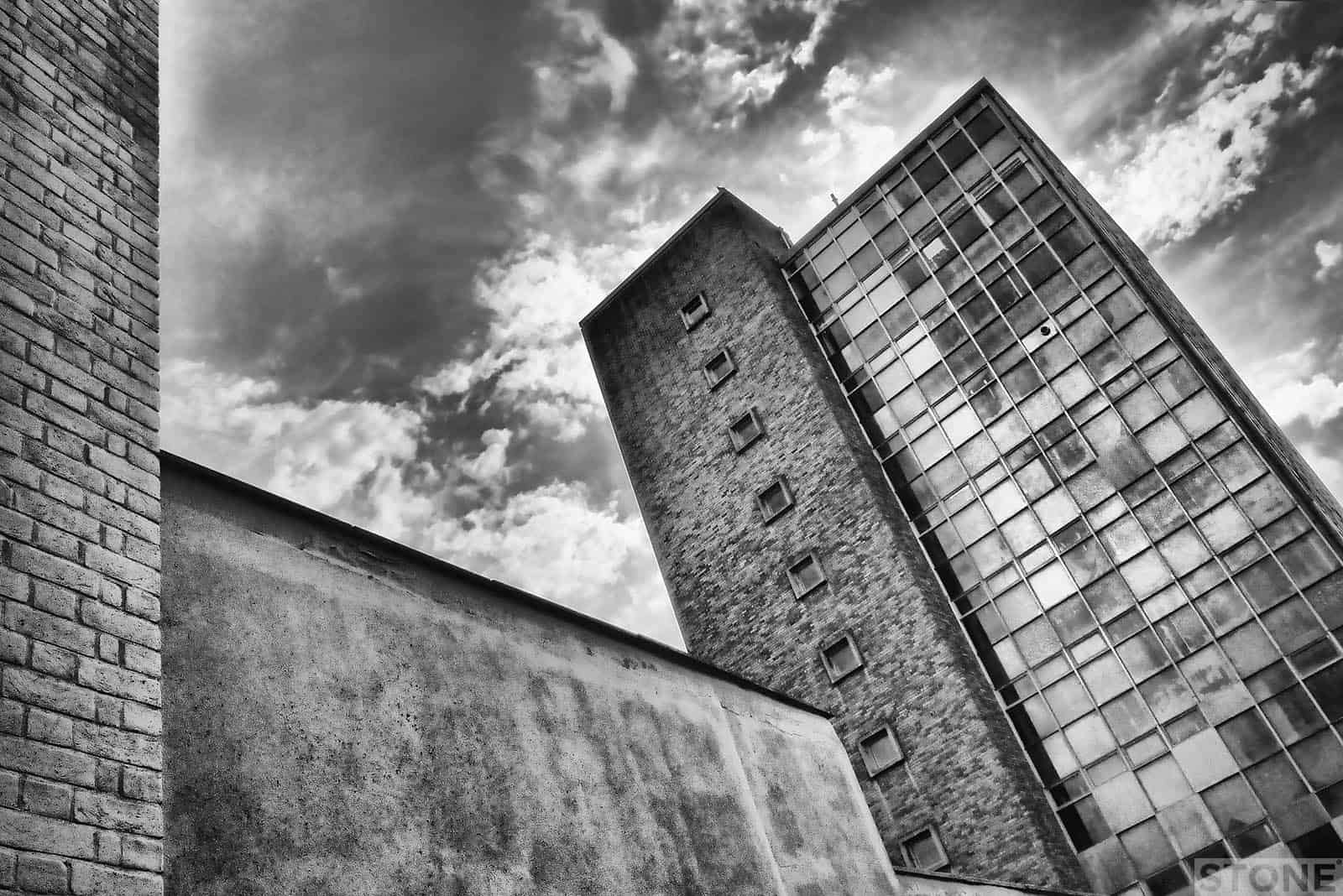I first met Westlegate tower in the 1970s, I would have been about seven or eight. It was just part of the background noise in a city where I had yet to link up all the parts. In 1975 it was just a place where my brother-in-law worked. And on a couple of occasions I went up into the offices of Provident Mutual and waited for him with my sister and my mum, meeting him from work, the only thing that stands out in my mind was the view, which was a bit fantastic and presumably still is although of course now this hulk, derelict when I photographed it in all its barren splendour is now flats for rich people; clad in white, with lots of glass, balconies and a garden in the sky.

I quite like the new tower, it is, well, new. Suddenly more visible, the developers cased the original Lusher 1959 build in a plastic drape and stripped the thing down, clothes off, skin off, organs out, pretty much down to the frame, and then gradually remodelled the whole structure. If you stood on Rampant Horse Street a few years ago, and looked up over the awkward and ugly corner of what is now Tesco, there he was, this big awkward boy standing at the back. Now, it’s almost like a gender transformation into a white woman, slick and now, the heraldry and yellow brick gone. She’s even got high heels, the top elevated by two new floors.

And the street itself; Westlegate as a name comes two words; Gate from ‘Gata’ an Old Norse word meaning street, and ‘Wassal’; a fine flour. Like Pottergate, Colegate, Fishergate, it belies our Anglo-Danish and Norman heritage as a city and the trades within it. The street we know the quite broad street with the Ugly Aviva castellations towering over one side and the tower on the other, it was much narrower, the tower of All Saints at the top dominating the hill lined with small shops, and all that remains in the post blitz schema is the church, now dwarfed and mirrored by its modernist counterpart and the old ‘Barking Dicky’ a hugely attractive Norfolkism for Braying Donkey, which was actually called the Light Horseman, a tiny little slice of the old left behind. You can see it in the inset picture from 1939, snatched by the marvellous eye of George Plunkett.



I actually liked the old building, a tall tower with heraldic shields, pointing up the castle. Now it is ugly Legoland, flats for rich people, as you say, but with no character.
I was sorry, like Edward, that the shields on the tower could not be preserved in the refurbishment – they were by far the best element of the original building.